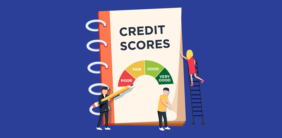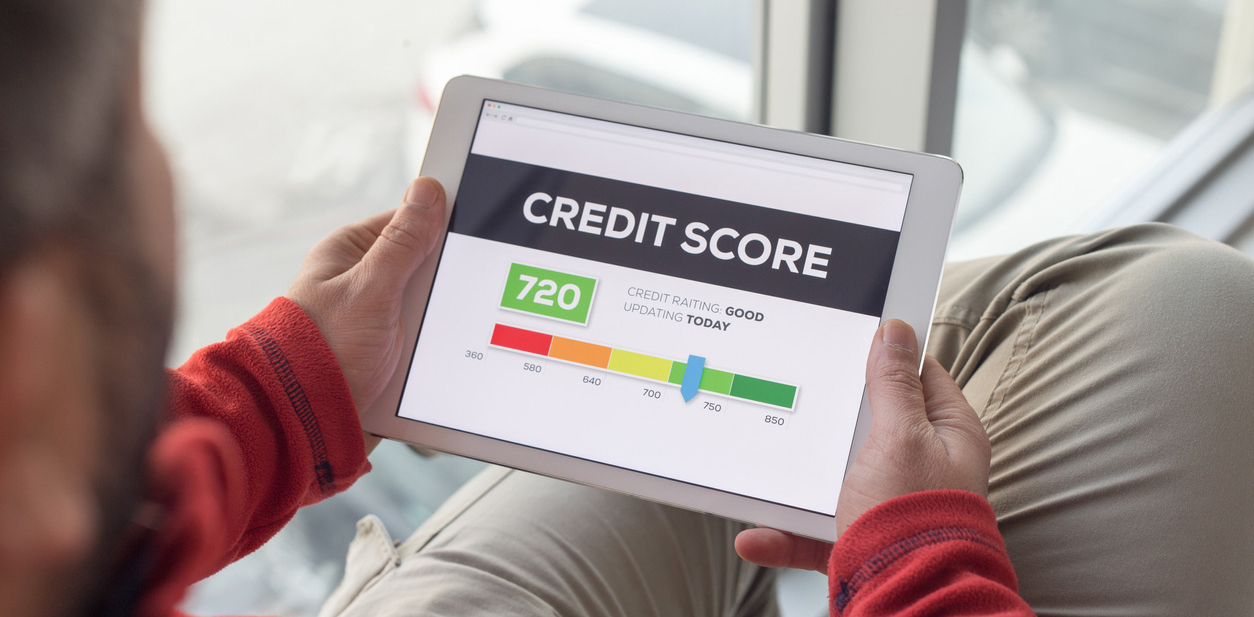Making small, steady changes that add up over time is how to save money for a home.
Buying a new home is a great goal to have, but first you’ll face a big barrier: the cost. When you first run the numbers sometimes it seems like you’ll never be able to afford a home, but you can. We’ll help you figure out how to save money for a home faster than you think.
What Costs Are Involved in Buying a Home?
It helps to have a target to save toward, so your first step is to figure out how much money you actually need to save. You can think of the cost of home buying in two parts:
Upfront costs
Homes aren’t cheap, and that’s especially true right at the beginning. The upfront costs of buying a home are what keep a lot of would-be home buyers in the renting game. Everyone’s different so your numbers might be more or less than your neighbor’s, but in general, here’s what you should estimate to start:
- Down payment: It’s best to aim for a 20% down payment so you can avoid paying an additional fee for private mortgage insurance (PMI).
- Closing costs: These are the costs of actually buying the home, such as paying real estate fees, inspection fees, loan origination fees, etc.. Most closing costs are between 3% and 5% of your home’s purchase price.
- Moving costs: Unless you move everything over by hand, you’ll need to spend some amount of money to move. If you’re a first-time home buyer you may also have lease break fees for your current apartment, or you may need to buy new furniture, appliances, and decorations.
Ongoing costs
Once you’ve actually bought the home, it’s a good idea to make sure you can actually afford it going forward too. That’s why it’s a good idea to estimate your monthly cost for these things:
- Private mortgage insurance (PMI): If you purchased a home for less than 20% down, you may have to pay for additional insurance. Some other types of mortgages like FHA and USDA loans come with PMI-like monthly payments too.
- Homeowner’s Association (HOA) fees: If your home is in an HOA, you’ll need to pay an additional monthly fee.
- Property taxes: Property taxes are included with your mortgage payment and can be substantial, depending on where you live.
- Homeowner’s insurance: Also included in your mortgage payment, your lender will require this. After your house is paid off it’s optional, but strongly recommended to protect your home.
- Repair and maintenance: It’s a good idea to save between 1% and 4% of your home’s value every year towards repairs and maintenance in a high-yield savings account. A new roof or septic system can cost many thousands of dollars to replace, after all.
- Utilities: People often upgrade to a larger home, and if that’s the case, you’ll need to budget for a higher utility bill.
How Do I Get a Mortgage Loan?
Getting the most affordable mortgage you can won’t directly help you save for a home, but it’ll help you afford your dream home sooner and keep the costs down in the long run too. In order to find the cheapest mortgage, here’s what you can do:
Check your credit
Your credit score is one of the biggest factors in determining how much you’ll pay for your mortgage. The unfortunate thing is that many people’s credit reports have errors on them.
And even if it’s accurate, checking your credit score early on with sites like Discover Scorecard can help notify you about things you can improve. In most cases it’ll take some time to build your score, so getting a head start on it now can give you a leg up by the time you’re ready to apply for a mortgage.
Pay down debt
It might seem counterintuitive, but paying down your debt can help boost your odds of approval for a mortgage, especially if you’re carrying a lot of debt.
Many mortgage programs even have requirements for this in place, limiting your debt-to-income (DTI) ratio to 43% or less in order to be qualified for a mortgage. This means that if more than 43% of your monthly income is going towards debt payments, it’s unlikely you’ll be approved.
Save up a higher down payment
Again, at first glance it seems like saving more money might hinder your homeownership goals. And it’s true that it might take you longer to save, but the rewards are well worth it.
You’re more likely to be approved for a mortgage if you make a larger down payment. You’ll start off with more equity (i.e., the portion of your home that you own).
Most conventional mortgages even require at least 20% down, or require you to pay expensive monthly PMI payments. The loans below require a smaller payment, but they still have other hefty costs that you can avoid by making a bigger down payment:
- FHA loans: These loans require as little as 3.5% down, but come with an upfront fee of 1.75% and an ongoing annual fee of 0.45% to 1.05% that’s split up into monthly payments with your mortgage.
- USDA loans: You can get one of these loans for a home in a rural area with no money down if you choose, but they come with a 1% upfront fee and an annual fee.
- VA loan: Veterans and active-duty servicemembers are eligible to buy a home with 0% down with this loan. It comes with a funding fee of between 1.4% and 3.6% that’s tacked onto your mortgage amount.
Self-employed borrowers
When you apply for a mortgage, lenders will check your employment history. But what if you employ yourself? In this case, most lenders require at least two years’ worth of tax returns from your business. If you’ve just started up full-time, this means it might be a couple years before you’re able to get a mortgage easily.
Create a Plan
Now that you have an idea of how much to save based on your homeownership and mortgage costs, you can create a plan for how to get there.
Look at your budget
Your budget is your roadmap for how to save for a home. It contains everything you need to save money, starting with your income and expenses. The difference between these numbers is how much you’ll actually be able to save each month.
So whether you’re budgeting every month or not, you at least need to know what these numbers are. Take some time to write down your budget if you haven’t already, and look for ways you can increase your income and decrease your spending.
Set up a dedicated savings account
It’s a good idea to keep your down payment fund separate from your checking account and even your emergency fund. If you’re often tempted to withdraw money from it, try opening an account at a different bank to provide an additional layer between you and your money.
Even better, you can keep your savings in a high-yield savings account so you can earn more interest. It’s also a good idea to automate your deposits so that your down payment savings grow according to plan regardless of what you’re doing.
4 Ways to Save Even More Money for a House
If you’re like most people, chances are you don’t have a big gap between your income and your expenses that will allow you to save. It’s frustrating, but know that it’s also totally normal. Unless you have rich family members, most of us will have to do the following in order to save for a house:
1. Look for expenses in your budget to cut
It’s sort of a cliché personal finance tip, but it works. Look through every line item in the budget you made above and brainstorm ways that you can reduce the cost, if possible. An easy win is to find things you aren’t using any longer, like old newspaper or digital subscriptions, and cancel them.
You can also get creative to replace your current expenses with cheaper options. For example, the average family plans to spend almost $1,000 this year for the holidays. You can save that money instead by focusing on handmade items and baked goods as gifts, for example. Here are some other ideas:
- Go on a no-spend challenge
- Replace cable with streaming TV
- Challenge yourself to cook one new meal a week
- Use your local Buy Nothing group, if you have one
- Only go shopping when you need to buy something
- Borrow books from the library instead of buying them
2. Refinance your existing debt
If you have a lot of debt, an overlooked area is refinancing your auto loans, student loans, or credit card debt for cheaper interest rates. This makes it so more of your money actually goes towards paying down the balance, versus into the lender’s pocket.
This can also help you pay off your debt faster so that you’re more likely to qualify for a mortgage, especially if you have a lot of debt.
3. Get a side hustle
You can only cut so many expenses out of your life. That’s why earning more can be a more powerful way for how to save money for a home. It can amplify your savings a lot faster so you’ll be able to afford your dream home in a shorter period of time.
It’s a good idea to focus on a way to make money you enjoy, or at least a side hustle that passes the time quickly. If you don’t enjoy your side hustle, it’s less likely you’ll be able to stick with it so you can earn more money.
4. Celebrate your savings progress
Adding in small bits of cash here and there into your savings account is a slow process for most of us, and it can seem like you’ll never be able to afford a home of your own. But just like any long-term savings project, such as your retirement savings, it’s important to celebrate your small wins along the way.
For example, a lot of people really enjoy printing out coloring charts to track their progress towards savings goals. You can also get crafty, such as creating a chain of paper links for certain milestones. Other people enjoy treating themselves with a small delight, such as a nice drink or a dinner.
Either way, celebrating these small wins will help you stay on track for the long haul.
You Can Save Up for a House
Saving up for a home can be a frustrating and lonely journey. Sometimes it seems like all your friends, family, and coworkers are buying homes for themselves, while you can’t. You may even be frustrated to see home prices going up while you browse the NMLS.
The important thing to remember is that as long as you’re saving at least some amount of money every money, you are making progress towards your goal. It might not happen tomorrow, but just like taking a single step at a time, you’ll reach your destination before you know it.
About The Author
RateGenius
A better way to refinance your auto loan. RateGenius works with 150+ lenders nationwide to help you save money on your car payments. Since 1999, we've helped customers find the most competitive interest rate to refinance their loans on cars, trucks, and SUVs. www.rategenius.com
;)












